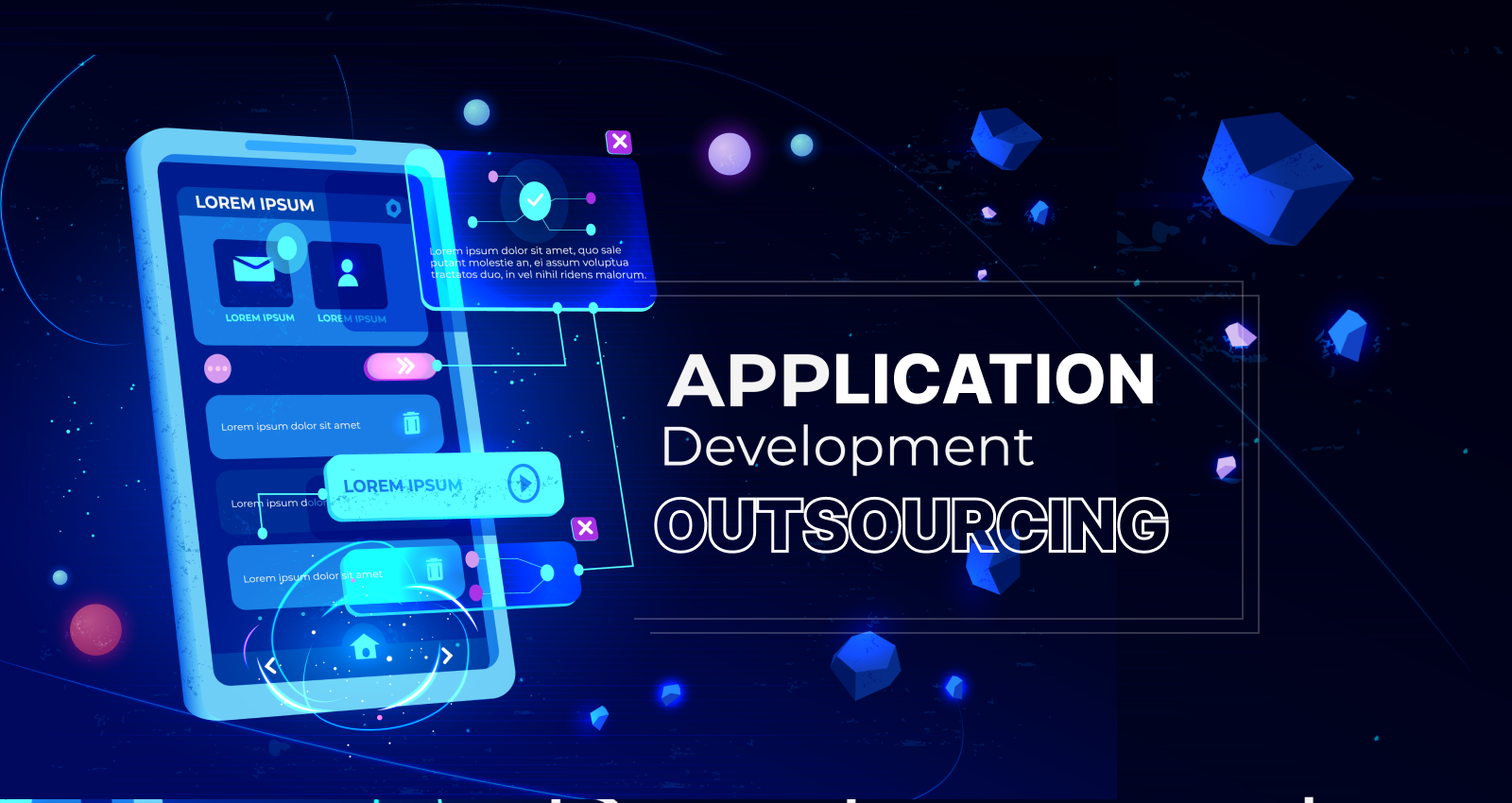Application Development Outsourcing: The Ultimate Guide

In today’s fast-paced digital world, businesses need cutting-edge applications to stay competitive and meet customer demands. However, developing a feature-rich, user-friendly app from scratch can be time-consuming, expensive, and resource-intensive. That’s where application development outsourcing comes into play. By outsourcing app development, companies can save time, reduce costs, and access specialized talent without overburdening their in-house teams.
In this ultimate guide, we’ll explore everything you need to know about application development outsourcing, from choosing the right approach to mitigating common concerns.
What Application Development Approach Fits Your Business?
Choosing the right application development approach can impact your project’s success, timeline, and cost. Let’s dive deeper into the different approaches:
1. Custom App Development:
Custom app development involves building an app from scratch, specifically tailored to your business’s unique needs. This approach provides full control over every aspect of the app, including its design, features, and functionality. Custom apps are ideal for businesses with specific requirements that off-the-shelf solutions cannot meet. However, this method tends to be more time-consuming and expensive because everything is built from the ground up. For instance, an e-commerce platform with complex integrations may need a custom solution to handle product catalogs, payment gateways, and customer management.
2. Platform-Specific Development:
Platform-specific development focuses on creating apps optimized for one platform, either iOS or Android. If your target audience primarily uses one platform, developing a native app for that specific platform ensures high performance, better user experience, and full access to platform-specific features (e.g., Apple’s Face ID or Android’s native gestures). The downside is that developing separate apps for different platforms can be more expensive and time-consuming.
3. Cross-Platform Development:
If your business needs to reach both iOS and Android users, cross-platform development might be the right approach. This involves building a single app that works across multiple platforms using frameworks like React Native or Flutter. The code is shared across platforms, significantly reducing development time and cost. However, cross-platform apps may lack some performance optimizations that platform-specific apps offer. It’s a great choice for companies looking for a balance between cost and reach.
4. Hybrid Development:
Hybrid apps combine elements of both web and native applications. They are built using web technologies like HTML, CSS, and JavaScript but are packaged as native apps. Hybrid development is faster and cheaper than native development because much of the code is reusable. However, these apps may not be as fast or responsive as fully native apps, which could lead to a less seamless user experience. Hybrid apps are best suited for businesses that need a basic app for multiple platforms and don’t require highly complex features.
What Are the Benefits of Opting to Outsource App Development?
Outsourcing app development provides numerous benefits, especially for businesses with limited internal resources or expertise.
A. You Hire a Team of Synergetic Experts:
When you outsource app development, you hire an entire team of experts, each specializing in different areas such as UI/UX design, development, testing, and project management. These professionals work together harmoniously to ensure a high-quality product. This is especially valuable because it eliminates the need for your company to hire, train, and manage an in-house team, which can be costly and time-consuming. By outsourcing, you gain access to global talent and experts who bring their experience and best practices to your project.
B. Time for Development is Lower:
Building an in-house development team takes time, from recruitment to onboarding and training. In contrast, outsourcing allows you to get started on your project immediately. The development team already has the skills and experience needed to start working right away, which accelerates the entire process. Additionally, outsourcing companies often work on tight deadlines, making it possible to deliver the app faster without compromising quality.
C. Pay for Just the Development:
One of the most significant financial advantages of outsourcing is that you only pay for the development services you need. There’s no need to worry about ongoing salaries, benefits, or overhead expenses like office space and equipment. This means you can invest in app development without the long-term financial commitment of hiring permanent staff. You can also scale your budget depending on the project’s complexity, allowing more flexibility.
D. Reduce the Stress on Your Internal Operations:
When you outsource app development, you free up your internal teams to focus on their core responsibilities. This helps prevent bottlenecks and ensures that other critical areas of your business, such as marketing, sales, and operations, continue to function smoothly. It also reduces the burden on your IT department, as they won’t have to manage the development process directly.
What Are The Primary Application Development Outsourcing Models?
There are different models for outsourcing app development, each with its own advantages and disadvantages.
I. Onshore App Development:
Onshore outsourcing refers to hiring a development team located in your own country. The primary benefit is ease of communication. You share the same language, time zone, and cultural norms, which minimizes miscommunication and makes collaboration easier. Onshore outsourcing is also beneficial when you need to meet specific regulations or compliance standards. However, it is often the most expensive outsourcing option due to higher labor costs in your own country.
II. Offshore App Development:
Offshore outsourcing involves hiring a team from another country, typically in regions with lower labor costs, such as Eastern Europe, India, or Southeast Asia. Offshore development can save you a significant amount of money while giving you access to a large pool of talent. However, time zone differences and cultural barriers may require extra effort in communication and project management.
III. Freelancers:
If you have a smaller project or limited budget, freelancers can be a cost-effective solution. Freelancers can offer flexibility and lower rates compared to outsourcing companies. However, you need to manage them closely and ensure they are committed to the project. Vetting freelancers is critical to ensuring their skills match your project requirements. Communication and accountability can sometimes be challenges when dealing with multiple freelancers.
IV. Off-The-Shelf Software:
Off-the-shelf software is a pre-built solution that businesses can purchase and customize to their needs. This option is fast and cheap compared to custom app development. However, it may not meet all your specific requirements and may limit your ability to scale or add unique features later on. Off-the-shelf software is best suited for small businesses that need a quick and affordable solution without much customization.
Points to Mitigate the Skepticism Around Application Development Outsourcing
Outsourcing can raise concerns, but you can mitigate these by taking the following steps:
a. Scope First; Quote Later:
Misaligned expectations are a common problem in outsourcing. To avoid surprises down the line, it’s crucial to have a well-defined project scope before getting a quote from vendors. This includes the app’s functionality, features, and timelines. By agreeing on the scope first, both parties are clear about what’s expected, and you can avoid scope creep (when additional work is added without adjusting the timeline or budget).
b. Select The Best Vendor For Your Project:
Vendor selection is one of the most critical factors in the success of your outsourcing project. Research potential vendors thoroughly, review their portfolios, ask for client references, and conduct interviews with their team. Look for vendors with experience in your industry or with the type of app you’re building. Pay attention to their communication skills, reliability, and ability to deliver on time.
c. Keep Your Business Resources Secured:
Security is a common concern when outsourcing, especially when sensitive data is involved. Make sure your vendor follows best practices for data security and complies with relevant regulations, such as GDPR or HIPAA. Sign a non-disclosure agreement (NDA) to protect your intellectual property and ensure that your business’s confidential information stays safe.
d. Establish a Seamless Communication Channel:
Good communication is key to ensuring the success of your outsourced project. Establish clear lines of communication from the start, using project management tools like Slack, Trello, or Jira. Regular meetings and status updates help you stay informed about the progress and provide opportunities to give feedback. A responsive vendor will make the outsourcing process smoother.
Steps to Outsource Application Development
If you’re ready to outsource your app development, follow these steps for a successful project:
1. Start With Outlining Your Project Scope:
Before approaching vendors, define your app’s functionality, target audience, design preferences, and any specific technologies you want to use. The clearer your project scope, the easier it will be for potential vendors to understand your requirements and provide accurate quotes.
2. Find The Right Software Outsourcing Company:
There are two main ways to search for vendors:
- Google Search: A Google search will help you find outsourcing companies that specialize in app development. Make sure to review each company’s website and client reviews to assess their expertise.
- Listing Websites: Websites like Clutch, Upwork, and Toptal list top-rated outsourcing companies and freelancers. These platforms offer detailed reviews and ratings from past clients, making it easier to compare vendors.
3. Thin Down Your Options and Finalize Your Project Scope:
After researching and shortlisting potential vendors, arrange meetings with them to discuss your project. Ask for case studies or portfolios and check their development process, technical capabilities, and costs. Finalize the project scope with the chosen vendor to ensure alignment.
4. Check On the Project’s Development From Time to Time:
Once development starts, schedule regular check-ins to track progress and ensure the project is on schedule. Be proactive in testing early versions of the app and giving feedback. This way, you can address any issues before they become major problems and ensure the app is on the right path to completion.
Conclusion
Outsourcing application development offers businesses the chance to build high-quality apps quickly and affordably. With the right approach, outsourcing model, and vendor, you can develop an app that meets your business goals without overburdening your internal teams. By following the steps outlined in this guide, you can mitigate the risks of outsourcing and ensure your app development project is a success.
Are you looking for any IT Services such as Software Testing, Web design and Development, Professional/Staff Augmentation Services, Cloud Computing, Mobile App Development, Digital Marketing Services and more? Connect Stridefuture Technology, which helps to meet your requirements.
{StrideFuture Technology, a full-service company specializing in Software Solutions and Consultancy services. We specialize in Personal, Business, IT Services, Software Testing, Web design and Development, Mobile App Development, Digital Marketing Services, and much more you can dream Virtually with us! Reach out for more service at StrideFuture Technology.}









